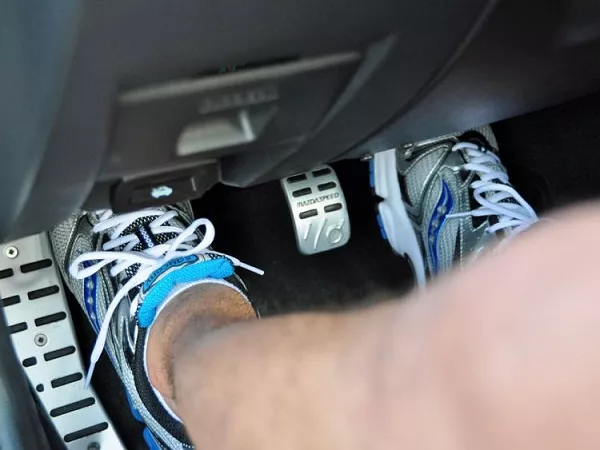Cars are so precisely engineered so that they can handle and manage almost unexpected situations by ECU driven features. However, sometimes weather and other prevailing road conditions will be a huge factor affecting the drive. Driving in such a sharply curved road, when at it the clutch, brake and stick dance the tango really requires drivers good driving skills.
For securing the car and the passengers safely, motorists should equip with the fundamentals of basic and defensive driving skills! The methods in gaining control and avoiding oversteer or understeer are important too.
In this article, Philkotse.com will cover several points and tips that can help keep control at all times.
1. Skills need when driving through sharply curved roads
This is not your ordinary and usual skill set that is often applied in the Metro, but it does come in handy for a long drive with curvy and swerved roads. In this type of driving environment, only the toughest will keep the engine running and the clutch going too. Until the bottom, top, or end of any curved nightmarish road is encountered; that will need these key skills. Getting the car through and safely drive through sharply curved roads is doable, and easily done with these tips and pointers.
- Controlling the gas pedal or throttle by controlled steps, light tapping, and riding it with controlled pressure.
- Situational awareness or sitrep that means; having full awareness around the car.
- Learning when to barrel in to gain momentum, and when to minimize forward momentum without using the brakes.
- Get a feel of the car on the road, and apply the brakes or throttle with timing. At this point the threat of oversteer and understeer is high; with the smallest mistake.
- Use the wheel to let your hands feel the roads smallest imperfections.
- Look forward over the hood and set a waypoint to reach; also play out the possible actions that can be taken.
- Do the triples A’s; they are Alertness, Anticipate, and Act which wraps everything together.
Every motorist will need these skills and there’s no exception. Although, some cars with stabilizers and balancers will be more and stability is important too. Features like stability control, ABS, EBD, and BA will help too. But, the driver behind the wheel is the most important component. If the driver cannot handle it; have someone else do the driving.
How to drive around curves at higher speeds
>>> Check out for more safe-driving tips:
- A short guide for Filipino drivers to safely drive in the mud
- 7 things to keep in mind to drive safely in fog
2. Step-by-steps to safely drive through sharply curved roads
All these steps must be done in a particular order; not jumbled when any novice should try it. The driver should be strapped in; as all the passengers for safety.
#Step 1: Take note of all blind corners
Whether the car is going up or down; the driver should take note of the road. It is recommended to use dashcam for the blind corners. If it goes up, then it will be easier that going down which is because the car will travel at a lower speed.
At this point; the driver should have a feel of the road and how the engine is reacting. Glancing at the dashboard and looking forward, better to ignore anything else except the wheel, gas pedal, mirrors, and the clutch. This all about entering the curved road zone; which will demand many special skills for manual transmission cars.

Entering the curvy road zone requires special skills for manual transmission cars
#Step 2: It’s important to get momentum going up
This is the fun part; when a level road would be a road going up not down. It’s important to get momentum going up; the elevation will slow the car to an uphill crawl. Hit the throttle and be sure it isn’t a blind corner; use a straight section of the road to accelerate the car.
Shift from a lower to a higher gear; and use the cars weight and momentum to drive it forward. When the car slows down; downshift to lower gear and accelerate enough not too much. Timing controlled acceleration and deceleration is better, but the clutch can get burned through. Hitting the throttle more and making smooth shifts is important.
Follow the rough smoothly and stay in the lane, to be safe too.
#Step 3: Notice another car in the opposite lane
It gets better here; because the elevated roads with curves drop and make it less difficult to accelerate. Just remember not to enter corners at speed or barrel at blind curves. Better to look ahead and see if there is another car in the opposite lane. Curved roads that are elevated is easy to hand and no need to use the brake; just go forward.
When hitting a decline; this now all about controlling the car with the right speed and applying the brake as needed. It is not safe for any car to enter curved road at speed; when other cars might be going through and eating chunks of the road. If the road dips; the driver must downshift but step on the brake controlling speed. Time to look to do the triple A’s, and save enough of the momentum to avoid more throttle and stepping on the gas sparingly.

Better to look ahead and see if there is another car in the opposite lane
#Step 4: Ease of the gas and downshift to a lower gear
Now, it is crazy-time when the car has enough momentum going forward from a decline road! Better look far and check if it is blind corner; keep the gear engaged and add throttle if needed. When entering the curve; ease of the gas and downshift to a lower gear to engine brake and release the clutch slowly!
Slight taps on the brake and turn into the curve while holding the wheel. Never barrel in fast or too slow, just at the right speed to round out any curve ahead. If the road is straight, shift to higher gear foe enough speed to climb an elevated road.
#Step 5: Repeat the use of the clutch, brake, and shifting
If the road is level; more high gear and repeat the use of the clutch, brake, and shifting to add or reduce speed. Going up is adding more throttle and going at any decline will use the throttle, brake, and gears to engine brake. Do all these safely drive through sharply curved roads but be careful when cornering curved sections of road.

Repeat the use of the clutch, brake, and shifting to add or reduce speed
This will be new to some drivers but older ones will know this. Driving this way to safely drive through sharply curved roads is smart and practical when on long road trips. Use this defensive driving technique on any road too.
Recent posts
- 3 essential equipment & 5 tips for Pinoy drivers to drive safely at night Jan 18, 2019
- How to drive safely in heavy rain: 5 essential tips Dec 05, 2017
- How to safely drive on sand Sep 21, 2022












